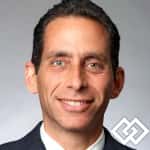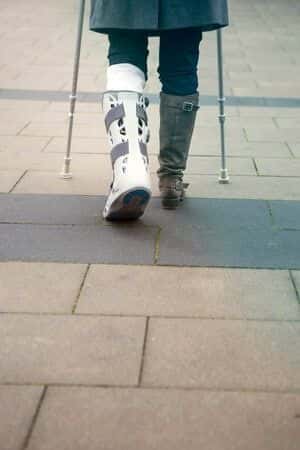Orthopedic Surgeon’s Repair of Tendon Leads to Synovitis
Updated on
Case Overview
This case involves a thirty-four-year-old female who presented to the emergency room after falling from six feet in the air. She was first diagnosed with an injury to her anterior talofibular ligament with no fracture evident on initial imaging. Her ankle was being treated conservatively and was not getting better after some time. The patient then began seeing an orthopedic surgeon who said that her MRI showed a tear to the peroneus brevis tendon and suggested surgical intervention. The orthopedic surgeon performed a peroneus brevis stripping but found no evidence of a tear during the procedure and diagnosed her with peroneal tenosynovitis. During a follow-up, the surgeon advised the patient to bear full weight on the afflicted limb but did not suggest any bracing. At this point, the patient suffered from worse pain that prompted her to see another doctor that performed a left ankle arthroscopic debridement and an open left ankle repair. The patient was ultimately diagnosed with severe synovitis of an infectious etiology and could no longer bear weight on the afflicted limb.
Questions to the Orthopedic Surgery expert and their responses
Was the standard of care offered to this patient when she first presented to the orthopedic surgeon?
The primary indication for treating these disorders is pain. Nonsurgical treatment usually is attempted first. Failure of conservative measures is an indication for operative intervention.
Was the standard of care offered to this patient when she first presented to the orthopedic surgeon?
If the patient had an infectious etiology that went unnoticed for an extensive period of time and was the proximate cause of the tissue injury due to the debridement, then this case may have merit.
Was the standard of care offered to this patient when she first presented to the orthopedic surgeon?
Natural immune response mechanisms cause swelling and migration of inflammatory cells, mediators. The septic process, along with the inflammatory reaction, could cause extensive tendon sheath adhesions and scarring.
About the expert
This expert is a board certified orthopedic surgeon who is actively practicing in his field. Currently he serves as an attending orthopedic surgeon at a major New York medical center. He also holds memberships at such prestigious orthopedics societies as the American Orthopedic Foot & Ankle Society and has over 10 years of experience as an attending surgeon at numerous medical centers. Furthermore, he has published many articles on ankle injuries on major orthopedic journals.

E-001037
Specialties:
Subscribe to our newsletter
Join our newsletter to stay up to date on legal news, insights and product updates from Expert Institute.
Sign up nowFind an expert witness near you
What State is your case in?
Subscribe to our newsletter
Join our newsletter to stay up to date on legal news, insights and product updates from Expert Institute.


